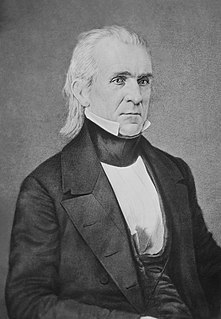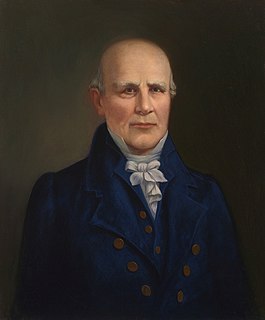A special election was held in Pennsylvania's 15th congressional district to fill a vacancy left by the resignation of Abner Lacock (DR) before the 13th Congress assembled.
| Elections in Pennsylvania |
|---|
 |
A special election was held in Pennsylvania's 15th congressional district to fill a vacancy left by the resignation of Abner Lacock (DR) before the 13th Congress assembled.
| Candidate | Party | Votes [1] | Percent |
|---|---|---|---|
| Thomas Wilson | Democratic-Republican | 690 | 78.9% |
| Robert Morse | Unknown | 80 | 9.1% |
| Patrick Farrelly | Democratic-Republican | 70 | 8.0% |
| Others | 35 | 4.0% | |

The 1976 United States House of Representatives elections were elections for the United States House of Representatives that coincided with Jimmy Carter's election as president. Carter's narrow victory over Gerald Ford had limited coattails, and his Democratic Party gained a net of only one seat from the Republican Party in the House. The result was nevertheless disappointing to the Republicans, who were hoping to win back some of the seats they lost in the wake of the Watergate scandal two years earlier. This election was the last time any party had a veto-proof majority in the House.

The 1974 United States House of Representatives elections were elections for the United States House of Representatives in 1974 that occurred in the wake of the Watergate scandal, which had forced President Richard Nixon to resign in favor of Gerald Ford. This scandal, along with high inflation, allowed the Democrats to make large gains in the midterm elections, taking 49 seats from the Republicans and increasing their majority above the two-thirds mark. Altogether, there were 93 freshmen representatives in the 94th Congress when it convened on January 3, 1975. Those elected to office that year later came to be known collectively as "Watergate Babies." The gain of 49 Democratic seats was the largest pickup by the party since 1958.

The 1960 United States House of Representatives elections was an election for the United States House of Representatives in 1960, which coincided with the election of President John F. Kennedy and was the first house election to feature all 50 current U.S. states.

The 1958 United States House of Representatives elections was an election for the United States House of Representatives in 1958 which occurred in the middle of Dwight Eisenhower's second term.

The 1956 United States House of Representatives elections was an election for the United States House of Representatives in 1956 which coincided with the re-election of President Dwight D. Eisenhower.

The 1940 United States House of Representatives elections coincided with President Franklin D. Roosevelt's re-election to an unprecedented third term. His Democratic Party narrowly gained seats from the opposition Republican Party, cementing their majority. However, the election gave firm control of the US House of Representatives and Senate to the New Dealers once again, as Progressives dominated the election.

The 1932 United States House of Representatives elections was an election for the United States House of Representatives in 1932 which coincided with the landslide election of President Franklin D. Roosevelt.

The 1920 United States House of Representatives elections were held, coinciding with the election of President Warren G. Harding, the first time that women in all states were allowed to vote in federal elections after the passage of the 19th Amendment.

The 1838 and 1839 United States House of Representatives elections were held during President Martin Van Buren's term at various dates in different states from July 1838 to November 1839.

The 1836 and 1837 United States House of Representatives elections were held at various dates in different states from July 1836 to November 1837.

The 1810 and 1811 United States House of Representatives elections were held at various dates in different states between April 1810 and August 1811 during President James Madison's first term.

The 1800 and 1801 United States House of Representatives elections were held at the same time as the 1800 presidential election, in which Vice President Thomas Jefferson, a Democratic Republican, defeated incumbent President John Adams, a Federalist.

The 2022 United States elections will be held on Tuesday, November 8, 2022. During this midterm election year, all 435 seats in the House of Representatives and 35 of the 100 seats in the Senate will be contested. Thirty-nine state and territorial gubernatorial and numerous other state and local elections will also be contested. This will be the first election affected by the redistricting that will follow the 2020 census.

The 2022 United States House of Representatives elections will be held on November 8, 2022. Elections will be held to elect representatives from all 435 congressional districts across each of the 50 U.S. states, as well as five non-voting delegates from the District of Columbia and four of the five inhabited U.S. territories. Numerous other federal, state, and local elections, including the 2022 Senate elections, will also be held on this date. The winners of this election will serve in the 118th United States Congress, with seats apportioned among the states based on the 2020 United States census. Democrats have held a majority in the House of Representatives since January 3, 2019, as a result of the 2018 elections, when they won 235 seats. However, their majority was reduced to 222 seats in the 2020 elections.
There were several special elections to the United States House of Representatives in 1923, spanning the 67th United States Congress and 68th United States Congress.
There were several special elections to the United States House of Representatives in 1883 during the 47th and 48th Congresses.
There were nine special elections to the United States House of Representatives in 1899 during the 56th United States Congress, which began on March 4, 1899. None of the special elections in 1899 were during the 55th United States Congress, which ended March 3, 1899.
There were five special elections to the United States House of Representatives in 1927 during the 70th United States Congress.